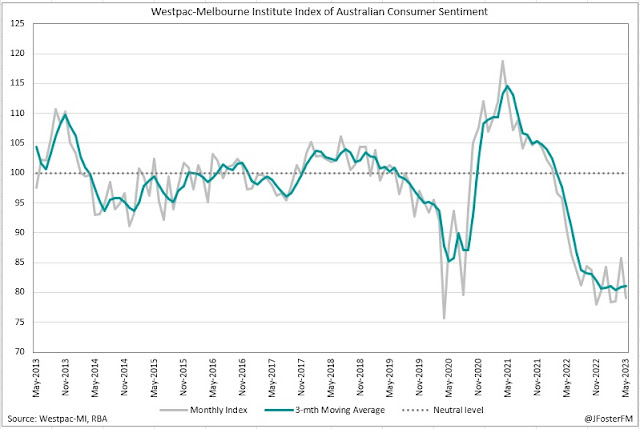A reappraisal of the interest rate outlook in the US was the key development in markets this week. Equities advanced on the back of improved sentiment, while the US 2-year yield saw its strongest weekly rise in 8 months as Fed rate cut expectations moderated, which in turn was a tailwind for the US dollar.
Rates repricing boosts US dollar
US bond yields moved sharply higher this week supporting the dollar. This was helped by optimism around an agreement to lift the debt ceiling and easing concerns over US regional banks. Many Federal Reserve officials spoke during the week, with the commentary indicating to varying degrees that the door was not closed on a June rate hike. Markets continue to expect a June pause (though a higher chance of a hike is being discounted) but pricing for rate cuts at the back end of the year has been scaled back by some 25bps. Data consistent with a resilient US economy also factors into higher bond yields. Retail sales at 0.4% in April missed on the consensus forecast, but sales in the control group (more closely aligned with household spending for GDP calculations) were higher than anticipated at 0.7%, posting its 2nd strongest rise in the past year.
Australian labour market data underwhelm...
Key labour market data underwhelmed this week, validating the market's view that the RBA will revert to a pause in June. The Wage Price Index was light relative to expectations at 0.8% in the March quarter (vs 0.9% expected). That saw the annual pace rise from 3.3% to 3.7%, a decade high in Australia but vastly more subdued than the wage pressures seen in the US and UK. It also remains in the range the RBA estimates is consistent with 2-3% inflation (assuming productivity growth of around 1%). Looking ahead, the RBA has wages growth peaking at 4% by year-end, though as discussed in my review (here) the recent momentum suggests that level is not assured. That said, the report also showed a rising share of jobs receiving larger pay increases, which a hawkish RBA may give more weight to.
April's labour force survey was weak across the headline numbers, though the report warrants caution due to seasonal effects around Easter (reviewed here). Employment fell by 4.3k in the month (vs +25k) resulting in the unemployment rate rising from 3.5% to 3.7%. That went against a strong first quarter for employment (with those increases revised higher), and labour force participation was also slower falling to 66.7% in April. The other factor in need of close consideration is that hours worked were reported to have surged by 2.6% in the month despite more than 5 million people being on annual leave over Easter.
... as the focus turns to the RBA
Markets have come to their conclusion but it remains to be seen how the RBA viewed this week's data. As was the case earlier this month, the Board can surprise. The May meeting minutes highlighted it decided to hike rates given that inflation was not anticipated to return to target until 2025 (as it had previously forecast) and there were risks that meant that timeframe could prove optimistic. Markets (fully priced for a hold) were caught offside by the May hike, but so were households. Consumer sentiment on the Westpac-Melbourne Institute Index plunged by 7.9% in May, its largest one-month fall since mid-2020. That decline also reflects the reaction to last week's Federal Budget.
BoE remains on message
A speech from BoE Governor Bailey was true to the message from last week's meeting where the MPC hiked rates by 25bps. Although the BoE's forecasts (largely based on Bank models) have inflation falling materially below target by 2025, there is a risk that inflation is more persistent. And, with that in mind, more tightening is possible. Some of that tightening will be delivered by the BoE running down its balance sheet, but as Governor Bailey and MPC members Broadbent and Ramsden told the Treasury Committee this week, the effect of quantitative tightening is expected to be small.
Key to the risk of persistent inflation are developments in the labour market, in particular the implications for wages growth. This week's data suggested labour market conditions remained strong overall. Employment outperformed expectations rising by 182k in the 3 months to March (vs 160k), though the unemployment rate ticked up from 3.8% to 3.9%. Wage pressures remain elevated, but earnings growth (ex-bonuses) at 6.7%yr came in softer than anticipated. The overlay is that pay disputes are causing significant disruptions in the UK; the ONS reported more than 550k working days were lost in March due to industrial action, up from around 330k lost days in February.
Euro area economy hanging in there
Although growth in the euro area economy is weak - Q1 GDP was 0.1% after stalling in the prior quarter - recession remains at bay. ECB Vice President de Guindos said that while the central bank had upwardly revised its own forecasts (that factored in a recession), the effect of tighter credit standards reported in the recent Bank Lending Survey on the economy was only starting to play out. On the euro area banks, de Guindos in a speech said that the economic outlook presented risks to banks' profitability that required monitoring, but for the time being the euro area system had been resilient amid the bank failures seen in the US and Switzerland. ECB Executive Board Member Schnabel made the case for further rate hikes, outlining that liquidity tools could be used to support financial stability if required.





